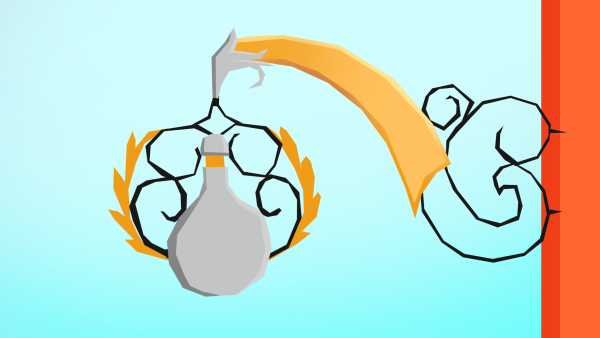How many words do you need to tell a story? Could you do it in only 280 characters? The genre of Twitter fiction challenges you to do just that!
In your writing journey, you might have heard the term novel, novella, even novelette, or short story, maybe flash fiction. These are writing works, categorized by their size (usually in words).
Word Count Differences
In a novel, you have over 40 000 words, there’s plenty of time to establish multiple characters, locations, side plots, and themes. This is, for example, The Great Gatsby, with around 47 000 words.
A novella is generally somewhere around 17 000 – 40 000 words. The author has less time to establish and develop everything, but there is still plenty of time to have multiple plotlines. An example of a novella might be Of Mice and Men, with 30 000 words.
A novelette is even shorter than that, at 7 500 – 17 000 words. While this might not seem much to a novel author, you can still fit in plenty of development, character, and theme in such a book. The Little Prince has just under 17 000 words.
Short stories range from 3 500 to 7 500 words. If you’re a short story author, you might know that it’s still possible to establish and develop characters, motivations, themes, plotlines, but it’s best to keep it short.
Flash fiction is generally accepted as between 100 and 1 000 words. Some people might even think this is as low as any publishable content goes. There still are publishers and magazines that publish flash fiction, but they’re not as common as for the bigger formats. In these stories, you should stick to one plotline, one theme, one to two locations, and only the main characters.
Now that you know about the sizes of other works, let’s talk Twitter fiction. These are stories that are done in 280 characters or less. Characters, not words. For reference, the paragraph you’re currently reading is 280 characters long. And you have to fit a whole story into it.
Obviously, this is not an easy task. You have to cut words, count characters, and worry about introduction, the mid point, and the climax in the space of one paragraph.
I’ve recently tried writing a few Twitter fiction stories; it was a lot of fun, and because of that, I would like to talk about it a little. I will go through some of the history of Twitter fiction, some tips and tricks on how to write it, mention a publishers who accept such stories (yes, you can get paid for these, but don’t expect a solid stream of income), and finally, share some of my tiny stories with you.
A Brief History of Twitter Fiction
A lot of articles talking about Twitter fiction mention Ernest Hemingway’s 6-word story;
“For sale: baby shoes, never worn.”
Obviously, Twitter didn’t exist in Hemingway’s time, but this story is a nice example of how famous authors in history considered insane restrictions like this in the past.
Twitter fiction in the true meaning (ergo on Twitter), was popularized by accounts such as @asmallfiction, or several Twitter novels (many tweets stringed together into a novel), for example, @smallplaces, with its 1000 tweets posted in the space of around two years.
In 2012, The Guardian challenged 21 authors to write 140-character long stories (back then, the tweet character limit was 140, as opposed to today’s 280). They published the authors’ works in their article.
Some Tips on Writing Twitter Fiction
When writing Twitter fiction, you obviously cannot have side character, side plotlines, side anything. You have to focus on one story, featuring one of two characters, often without even directly specifying the setting. While this is all fairly obvious, there are some other things you should keep in mind when writing these tiny stories.
Rely on the reader’s imagination. You don’t have to describe a setting, you don’t have to describe how a character looks, you often don’t even have to finish the story. An interested reader’s mind can fill in the blanks.
If you don’t have a really strong story that can carry the work alone, pick a solid theme. If you leave the reader thinking about something about the end of the tiny story, you’ve done a good job.
Open a thesaurus (physically or digitally). When trying to lower the character count, you will have to rewrite a lot, and it’s handy to refer to a thesaurus to find shorter synonyms of the words you’re using.
Write a short story first, then cut characters. In my experimentation within this format, I found that it works best (at least for me) when I write the story, overstepping the limit at the process (sometimes even end up at double the required character count), and then look back on the story and see what I can cut or rewrite to be shorter.
Publishing Twitter Fiction for Exposure and Profit
As I mentioned above, there are some publishers that accept Twitter fiction, although they are pretty rare. If you get one of your tiny stories publisher, you get a bit of exposure (maybe even a few new followers on Twitter) and sometimes even some money.
The biggest publisher of Twitter fiction is Nanoism. They release one short story (limited to the original 140 characters) a week. They offer both a token payment of $1.50 per story, and exposure in the form of a link to your website/Twitter account. You can submit one story per week.
Unfortunately, I wasn’t able to find any other publishers who specifically disclose they are accepting stories under 280 characters. If you know of some, please let me know in the comments so I can add them to this article.
My Attempts at Twitter Fiction
In preparation for this article, I have written a few Twitter fiction stories. I have set myself the limit of 280 characters (because I’m not crazy nor good enough to go for 140), including the 20 characters included in the appropriate hashtags – #vss #twitterfiction. This means I had to fit each story, including formatting, into 260 characters.
Here are three of my favorite stories I wrote when researching for this blog post (I removed the hashtags that would otherwise be in the tweet):
There is a moment in every man’s life where he looks back at what he has achieved, and feels deep regret. The mistakes he has made, the trees he has burned, all the greed. For me, it was onboard the Krishna, looking down one last time at my old home.
First memory, the fireworks on New Year’s with dad. School, meeting my best friend. Years later, in college, meeting Her. Wedding. Birth of Josie. Her first birthday. Second child, Cathy. All memories, flashing. Last one. Car’s hood, the surprised driver.
<2,000 feet.>
<2,200.>
You okay?
Yeah, I’m fine.
<2,400.>
We got this.
Are you scared?
<2,600>
A bit. More excited.
What do you think we’ll find?
<2,800>
The city, I hope.
Yeah, I’d say- shit!
<3,000 fe->
<ALARM; UNKNOWN LARGE ENTITY APPROACHING. EMERGEN->
I will be posting these, and my other attempts at Twitter fiction on my account. I might even write some more tiny stories in the future, so feel free to follow me there.
Conclusion
Twitter fiction sets an interesting, and pretty unforgiving constraint on your writing. In order to comply with the character limit, you have to set up everything you need and then deliver the “climax” in around 40 words.
I would definitely recommend trying to write at least 10 of these tiny stories, as it can be an awesome exercise and it can help you with boredom. If you do write a story under 140 characters, try submitting it to Nanoism, you might get accepted.
If you have enjoyed this article, I would like to invite you to the Eledris Blog Discord server. It’s a growing community of worldbuilders and writers who would be very happy to welcome you among them!
You can also subscribe to my newsletter, where I send out emails about worldbuilding, writing, art, and game development. By signing up, you will also unlock access to a ton of exclusive resources in the Exclusive Resource Library of the Eledris blog. Sign in below:
Eledris Newsletter
FAQ
Twitter Fiction stories are fully-fledged stories written in less than 280 characters, including spaces. Some authors prefer to take up the original 140 character limit, and some authors write entire novels by stringing hundreds of tweets together into one coherent story.


